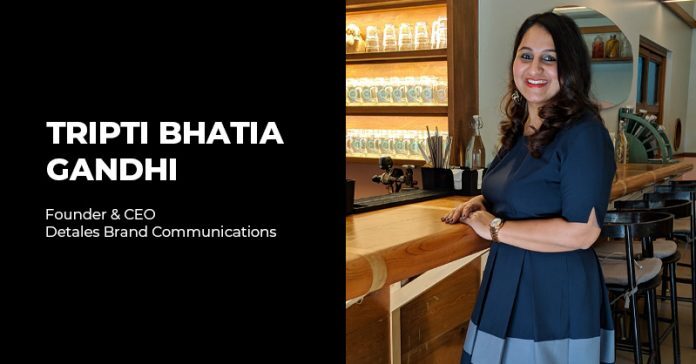
Pandemic or not, maneuvering through the restaurant industry is a challenging task. Bring in the threat of a virus, social distancing norms, and heightened hygiene concerns and it becomes insurmountable…well, almost. One of the defining characteristics of this industry is its dynamism and the ability to adapt — something that this time has pushed businesses all over the world to bring to the fore. As we move from chaos to caution, restaurant spaces are likely to bring their guests innovatively, restructured experiences in the new decade.
As soon as the World Health Organization delinked coronavirus and cooked food, there was some relief. Even though most people opted for home-cooked meals during the greater part of the lockdown phase, special occasions, comfort cravings, and convenient cleanups led to scores of people pressing those ‘order now’ buttons. Six months into the first lockdown, Zomato India reported that their delivery numbers were back to their pre-pandemic levels.
Fine-dine, Michelin-starred restaurants like Hakkasan London that worked solely on the in-dining restaurant experiences, had to turn their attention to home-delivery – something they had never done before. While the charm of ‘going out’ is far from lost, it is likely that the digital delivery experience for restaurants big and small is here to stay even as things ‘normalize.’ An expanding delivery radius, seamless customer experience through restaurant-owned platforms or aggregators and tech-driven consumer convenience will be imperative in 2021.
Even as fine-dine restaurants and five-star hotels jumped onto the delivery wagon, on the flip side, comfort food had a ton of takers. As people turned to feel-good meals in uncertain times, restaurants made sure that the ordering in experience was worthwhile. In Mumbai, new entrants like The Mexican Box opened up as a delivery kitchen right in the middle of the lockdown, served up a Mexican feast, complete with playful packaging and pre-mixed drinks to elevate the home-delivery experience into a full-blown fiesta.
The slighter older brands had to reinvent their offerings in newer ways. Woodside Inn, for example, took their iconic Beer & Burger Festival completely online for the first time in 13 years. In keeping with the idea of coming up with different themes every year that translates into a festive offline experience, they opted to deliver a ‘beer and burger picnic at home’ with elements like a board game, Spotify playlist and picnic basket packaging to bring the outdoors in.
Now with dine-in opening up, they’re encouraging people to come and experience the space in the daytime either to work or spend a fun afternoon to counter their ‘evening bar’ image with a special menu that incorporates comforting daytime fare and a collaborative beverage program with well-known brands like KC Roasters and Chado Tea. Going forward, restaurants and bars will have to offer more – carefully curated experiences both with delivery and offline, so consumers find it worth their while to step out in a post-pandemic world, loosen their purse strings and truly enjoy the F & B experience.
Two things that will drive restaurant growth post-pandemic are local ingredients and the locality of service, both of which have seen great innovation during this phase. With entrepreneurs constantly pushing the envelope to develop the best locally produced food and drink items – from vegan cheese to kombucha, it would be prudent for restaurants and bars to be mindful of their sourcing and menus, incorporating fresh, local, and healthy immunity-building ingredients in a way that appeals to consumers’ post-pandemic mindset. It is also crucial for businesses to think about their own neighbourhoods and other serviceable locations.
Restaurants already present and open would require some local community engagement to remind the neighbourhood that they’re around to provide a safe and enjoyable dining experience. If they provide home-delivery, it would be wise to consider ways of increasing the delivery radius to reach a wider consumer base. When the lockdown partially opened up, several Mumbai restaurants like Americano and Iktara discovered that scores of Mumbai residents who owned properties in the coastal town of Alibaug could be served up fresh and exciting food. Connected with the community on Whatsapp groups, these brands expanded their delivery radius to fuel additional sales. For new restaurant businesses, it can be tricky but hope is on the horizon.
Yelp reported that in the last quarter of 2020, more than 18,000 new restaurants opened in the United States (just a 4% decrease from Q4 2019). The freshness of a concept can definitely give a brand the edge in generating excitement at a time when the world is feeling relatively pessimistic.
Take, for example, Oleander Farms, a family-owned property located in Karjat that now houses Saltt — a restaurant and bar that comes with the promise of a worthy daytime getaway. Far from the crowded streets of Mumbai, it offers botanical cocktails, fresh food, and comforting café favourites with a side of that much-craved fresh outdoorsy space, making it a tempting spot to explore in the current scenario.
Innovative tech solutions are going to play an increasingly pivotal role in the future of restaurant and bar experiences.
With concepts like The Local Culinary – the first virtual restaurant franchise model in the USA and Kytchens, a ‘full-stack kitchen-as-a-service’ platform that enables brands to maximize reach in India, businesses have loads of opportunities to scale.
Couple these solutions with the right marketing mix that reaches target groups constantly glued to their phones through micro-influencers, collaborative campaigns, well-placed PR stories, and digital ads, and soon enough, businesses will start looking at their plates and glasses as half-full.
This post has been authored by Tripti Bhatia Gandhi, Founder & CEO, Detales Brand Communications.
Comments
comments
